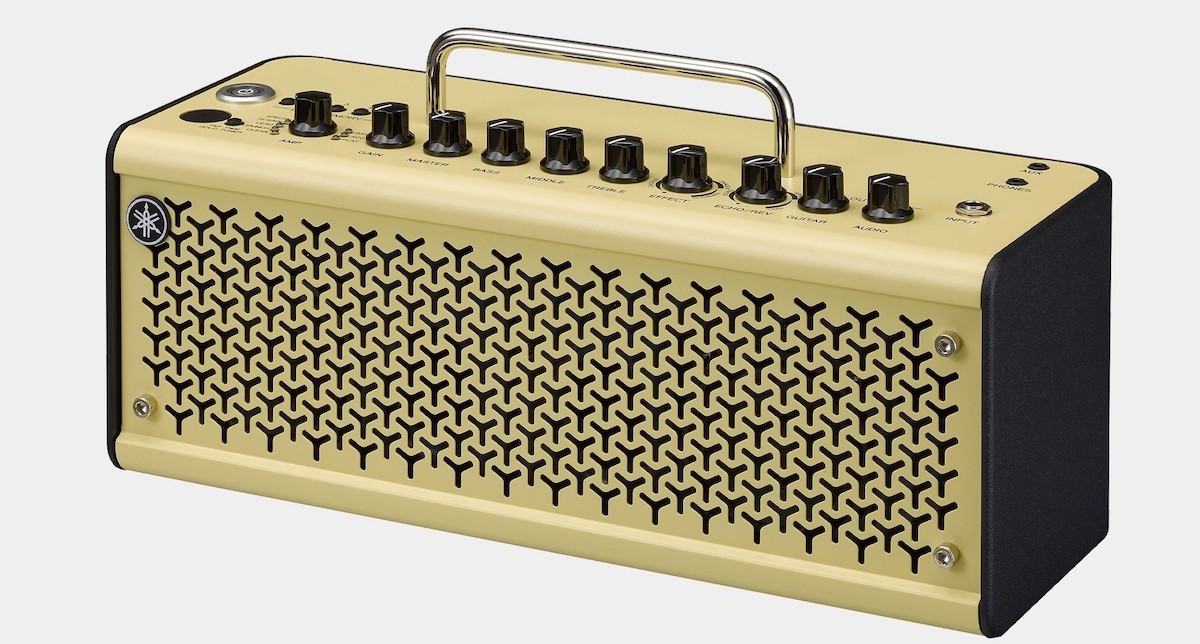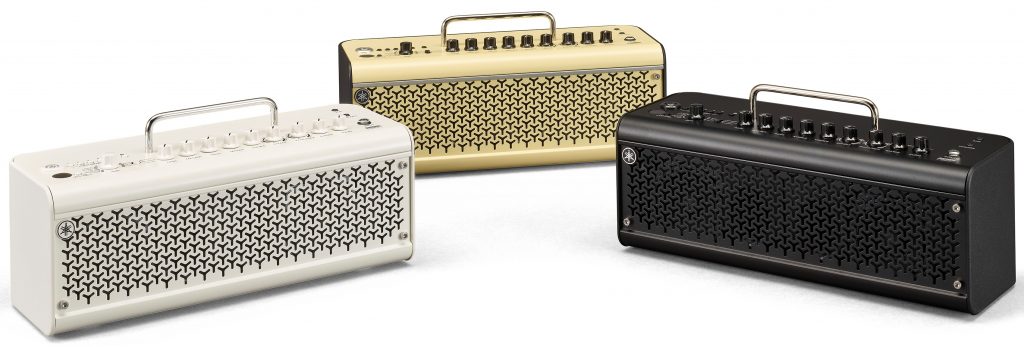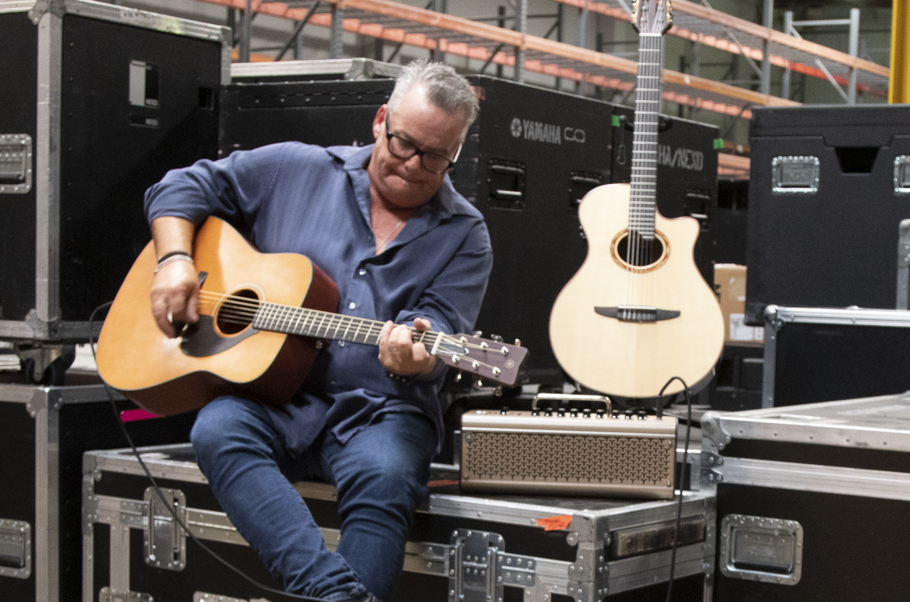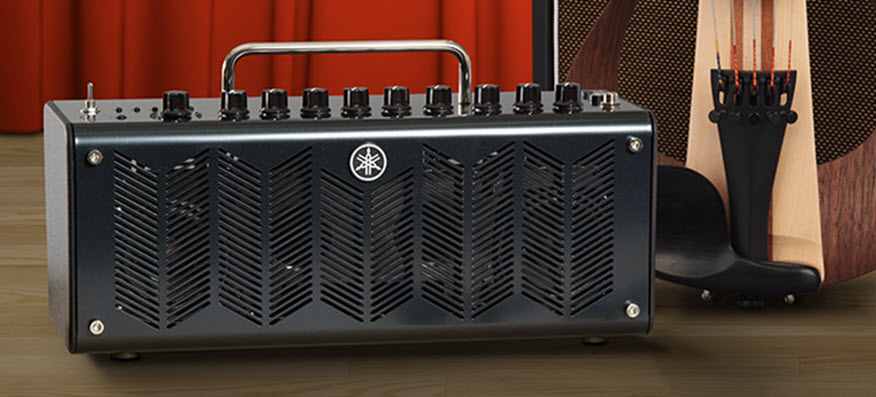Desktop Amp Buying Guide
There’s a model that’s just right for you.
So you’ve just gotten an electric guitar. Maybe it was a holiday gift from someone special or a special gift you bought for yourself. Perhaps you purchased it as a present for another family member. No matter what the situation, you’ll need an amplifier to plug into. The good news is, if you’re mainly going to use it for practice, choosing a suitable amp isn’t all that hard. That’s because of something called “digital modeling technology,” which convincingly imitates the tonal properties of a wide variety of amp types. Because of modeling, pretty much any guitar amp can sound like pretty much any other guitar amp these days.
This being the case, the main questions you need to ask yourself concern size and power output (the latter is measured in wattage). Your principal choice will be between smaller “desktop” amps and larger “traditional” models. In this blog, we’ll focus on the option that takes up the least space and offers the most portability and versatility: the desktop amp — a concept originated by Yamaha some years ago and exemplified in the company’s current THR-II Series.
Just to be clear, this kind of amp has nothing to do with the virtual desktop on your computer; it’s not a piece of software and in fact there’s nothing virtual about it. These are actual amplifiers that are small enough to fit on an actual desktop, and there are four models to choose from. Let’s take a closer look at each.
THR10II
The smallest amp in the lineup is the THR10II, which is just over 7 inches high, 14½ inches wide and 5½ inches deep. There are two different varieties of the THR10II (the THR10II WL model has a built-in wireless receiver and rechargeable battery), but both come with dual 3″ speakers and put out 20 watts of power — more than enough for learning purposes. Perhaps even more importantly, both have auxiliary inputs and Bluetooth® capability so you can jam along with the favorite tunes on your smartphone, tablet or music player. Both also feature headphone outputs, so you can practice in complete privacy … and without disturbing other family members or neighbors.

THR30II WL
Obviously, desktop amps are perfect for practicing at home, but with the THR10II WL and slightly larger 30-watt THR30II WL wireless models in particular, you can practice pretty much anywhere, since they can run on either AC power or an internal rechargeable battery. What’s more, their use of VCM (Virtual Circuitry Modeling) means that they can produce a range of sounds much bigger than they are. There are multiple amp tones to choose from, each offering a different amount and/or type of distortion, plus settings for bass, acoustic guitar and other instruments.
Add two distinct effects circuits — one for modulation effects (chorus, flanging, etc.) and one for delays and reverbs — and you’ve got an amp that sounds great right out of the box: no effects pedals needed. The modulation effects have all the watery shimmer any fan of classic ’80s new wave could want, while the delays and reverbs successfully combine digital clarity with analog warmth. And if you’re not satisfied with the presets for any reason, you can download a free THR Remote editor app (available for both iOS and Android® devices), which allows you to customize those effects — and amp tones — to your heart’s content. Last but not least, like the THR10II models, the THR30II WL provides an auxiliary input, Bluetooth support and a headphone output, allowing you to jam to your favorite tunes and practice in private.

THR30IIA WL
Okay, but what if your guitar isn’t a standard electric, but an acoustic-electric (meaning that it’s clearly audible either plugged or unplugged)? In that case, you don’t need an amplifier for home practice, but you may still want one for live performance, as well as for the extra tonal possibilities it offers. The Yamaha THR30IIA WL is specifically designed to be used with acoustic guitars, and whereas the other desktop amps in the THR-II Series feature digital models of various amplifier types, this version instead lets you select from three different microphone models — Tube, Dynamic and Condenser — that simulate what your guitar would sound like if you put one of those mic types in front of it.
When I’m recording acoustic guitar at home, I often use a dynamic mic for convenience, and in my experimentation with the THR30IIA WL, I found that its Dynamic setting was true to that basic, no-frills tone. The Tube and Condenser settings, however, were the opposite of what I expected: Condenser was more resonant overall, making it well-suited for playing on your own, while Tube gave individual notes — even low ones — more definition, making it ideal for those times when you’re playing with others and need to have your parts cut through. Besides the three mic models, there are two other modes: Flat (which, as the name suggests, leaves the signal coming from the guitar as is, with no sonic enhancements) and Nylon-String (a midrangey sound designed specifically for classical acoustic-electric guitars).
Like the other THR-II amps, the THR30IIA WL features some cool onboard effects. You can pick a short or long reverb as well as chorus, delay or both together. (The delay is actually more of a slapback echo, designed to be atmospheric and not overwhelm what you’re playing.) To kick things up a notch or two, you can also deploy a stereo imager, which impressively widens the sound field produced by the amp’s two 3.5″ speakers and adds a pleasing hint of an early-reflection tone (another name for ultra-short reverb — think tile bathroom) as well.
If you like to sing as well as play guitar, the THR30IIA WL has you covered, since it has two inputs, one specifically designed for a microphone. Bluetooth, wireless and battery-power capabilities are all standard too.

Perhaps most impressively, every desktop amplifier in the Yamaha THR-II Series weighs less than ten pounds. Not long ago, getting so much sonic variety in such a compact package would have been considered absurd. With these amps, not only do you get all those options, you can take them with you everywhere you go. What’s more, every model has a USB port and comes with a copy of Steinberg Cubase AI software, which makes it easy to take the sound coming out of your amp and turn it into digital audio — going from an actual desktop to a virtual one. The power of technology!
Click here for more information about Yamaha THR-II Series desktop amps.
Click here for more information about the Yamaha THR30IIA desktop amp.















